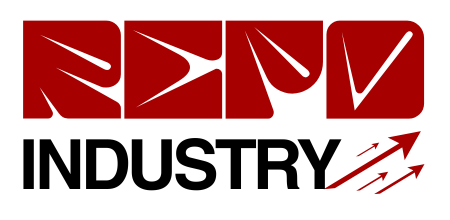Key Takeaways:
- Efficient payroll software can automate and simplify complex business operations.
- Integrating payroll systems offers benefits like time-saving, compliance, and enhanced accuracy.
- Understanding effective payroll software’s key features and functionalities helps you select the right tool for your business needs.
Introduction to Payroll Software
Navigating a business’s financial intricacies feels daunting. One critical component that demands precision is payroll management. Accurate payroll handling is foundational, ensuring compliance with legal requirements and maintaining employee satisfaction and trust. Finding the right software for running payroll in Canada can streamline a company’s operations, reduce errors, and ensure financial compliance. Businesses can focus more on strategic growth activities by automating mundane payroll tasks.
The quest for operational efficiency has encouraged many businesses to adopt advanced payroll systems. These systems are designed to tackle problems posed by manual processes—ranging from miscalculations to compliance mishaps. Given these complexities, integrating robust payroll software emerges as a savior, providing businesses with a seamless approach to efficiently managing employee wages, tax filings, and benefits. A well-chosen payroll solution becomes an investment in the company’s future, allowing it to lay a firm foundation for scalability.
Key Features to Look For
Selecting the appropriate payroll software entails understanding the essential features and functionalities. Notably, automation is a cornerstone, ensuring swift and error-free processes from time-tracking to salary disbursement. Automation not only quickens the pace of operations but significantly reduces human error, which can be costly and time-consuming.
Integration capabilities with existing company software and systems significantly enhance ease of use. Support for various tax regimes is indispensable for businesses operating in multiple jurisdictions. Adopting a flexible system that facilitates growth across borders is no longer just an option but a necessity. Moreover, data security is paramount, given the sensitivity of payroll information. Administrative roles should be distinctly defined, ensuring only authorized personnel can access critical data. Comprehensive reporting functions are also crucial, offering insights into labor costs, departmental expenses, and payroll forecasts. Such functionalities enable business leaders to make informed decisions, enhancing business operations. Industry insights suggest that entities refining their payroll operations through software see improved productivity.
Benefits of Automated Payroll
The shift to automated payroll systems comes with numerous advantages. Time and effort are notably reduced as these systems handle repetitive tasks. Gone are the days of laboring over time-intensive calculations and data entry. Automated systems free up critical resources that can be better allocated to other areas of business development.
Manual errors, particularly missed deadlines or incorrect calculations, are minimized, safeguarding the organization from potential financial penalties and fostering a dependable work environment. Precise and timely salary disbursements enhance employee morale and job satisfaction, positively impacting productivity. Furthermore, automated payroll systems update compliance regulations automatically, keeping the organization aligned with legislative changes. This preemptive compliance mechanism alleviates the administrative burden and is a significant step towards operational efficiency. Additionally, when employees consistently receive accurate pay, it aids in maintaining high morale and trust, translating to lower turnover rates and higher quality output from team members.
Common Challenges
Despite their myriad benefits, implementing payroll software can introduce specific challenges. Data migration from legacy systems is a frequent obstacle, as is ensuring seamless integration with existing HR and accounting platforms. Transferring data requires careful planning to avoid loss or corruption, which can have far-reaching implications.
Organizations may also face data security concerns, necessitating a detailed evaluation of the software’s encryption and security protocols. Protecting sensitive employee information from cyber threats should be a top priority. Furthermore, selecting the right provider can be bewildering due to the many available options. Cost considerations, mainly hidden fees, may strain budgets if not carefully examined. Transparency and comprehensive service agreements are crucial in avoiding unforeseen expenses. Proactive planning and understanding of potential challenges in payroll software implementation can ease the transition and contribute to a seamless deployment.
Comparison of Top Software Options
When evaluating payroll software options, companies should compare offerings based on scalability, cost, customer support, and user feedback. Leading solutions often provide features tailored to varying business sizes—from small enterprises to multinational corporations—catering to diverse operational needs.
Reading reviews and seeking referrals can clarify the software’s performance in real-world applications. Consider the total cost of ownership, factoring in initial setup fees, recurring subscription costs, and any additional charges for customer support or software upgrades. The investment should reflect not only immediate benefits but potential savings and efficiency in the long term. Ultimately, software selection should align with the business’s growth trajectory and specific operational needs. With careful analysis, companies can equip themselves with tools that foster sustainable growth.
Future Trends
The landscape of payroll software is evolving with technological advancements. AI-driven analytics are revolutionizing how businesses interpret payroll data, providing actionable insights for decision-making. The era of data-driven decision-making is upon us, and companies leveraging AI within payroll systems can gain a competitive edge.
Mobile accessibility is becoming increasingly important, offering employees and managers flexibility in managing payroll functions from anywhere. As these trends gain traction, they promise to transform the payroll operations space further, turning mundane tasks into strategic opportunities for innovation and improvement. Furthermore, integration with HR management systems is becoming more sophisticated, providing a unified platform for managing employee lifecycle processes, from recruitment to retirement. Staying abreast of these advancements can equip businesses to leverage technologies that drive greater efficiency and employee satisfaction, securing a forward-thinking approach to business management.
Tips for Successful Implementation
Successful implementation of payroll software hinges on meticulous planning. Begin by assessing organizational needs and drafting a comprehensive implementation plan that includes timelines and key performance indicators. Strategizing from the onset ensures clarity and direction throughout the adoption process.
Training sessions must be organized for staff members who regularly interact with the software, ensuring they are well-versed in its functionalities. Empowering your team with the knowledge they need can lead to higher adaptation rates and use effectiveness. Conducting pilot tests with a small data segment can identify potential issues before full-scale implementation, allowing room for adjustments. Maintaining open communication with software vendors and leveraging their support resources can significantly impact implementation success. A proactive approach and careful consideration of details can transform the implementation phase into a rewarding experience that sets the stage for long-term success.
FAQs about Payroll Software
What is payroll software? Payroll software automates paying employees, including calculating wages, withholding taxes, and managing benefits. It offers a toolset for company leaders seeking to align operational efficiency with financial compliance.
Can payroll software be customized for different industries? Indeed, numerous payroll solutions provide custom options to address the unique requirements of different industries, guaranteeing adherence to sector-specific regulations. This adaptability underlines the importance of selecting a system that can grow alongside your business.
How does payroll software handle compliance changes? Most advanced payroll software updates automatically to reflect changes in compliance requirements, keeping businesses informed and compliant with minimal effort. Automatic updates safeguard against legal complications and ensure alignment with evolving laws.











